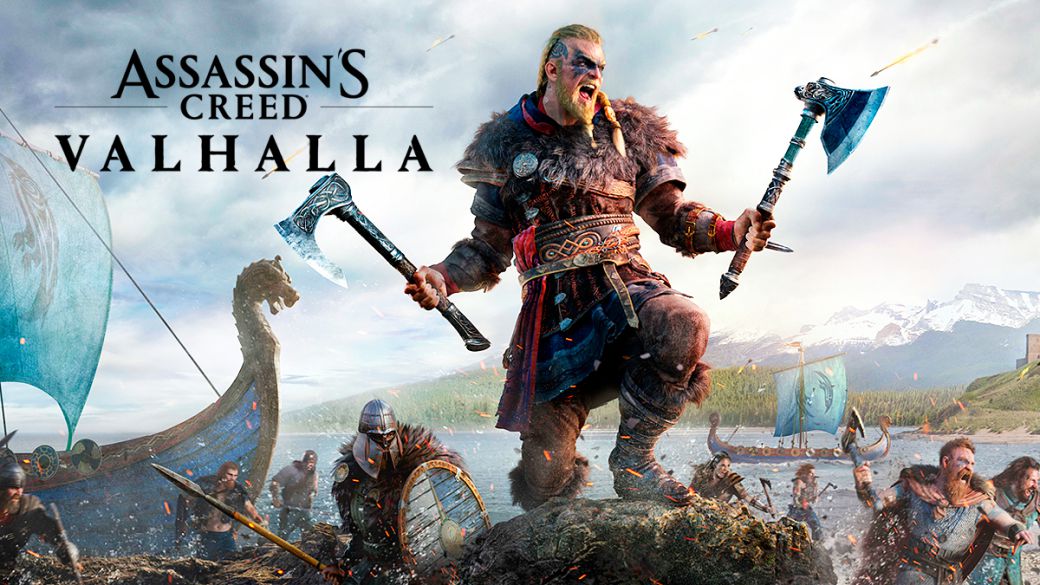
We analyze the new title from Ubisoft Montreal, a game that follows in the wake of its two predecessors, but that reintroduces some classic mechanics.
Bayek of Siwa and Aya of Alexandria were the forerunners of the Brotherhood of Assassins, then known as the Order of the Hidden. From the beginning, his fate was linked to that of the Order of the Ancients, which later acquired another name, that of the Templars. Centuries passed, but the conflict between both creeds lasted in time, until it touched the present. The story of Assassin’s Creed Valhalla, the newest work from Ubisoft Montreal, leaves the ancient world for the 9th century AD, a period closer to the time of the re-founding of the cult.
Partly due to plot constraints, Assassin’s Creed Origins, and to a lesser extent Odyssey, shed some classic elements that had been around since the first installment of the series. Social stealth, hidden blade, and parkour all disappeared without a trace, also because the playable formula had been almost completely redesigned with new mechanics. There is little doubt that the product at hand follows the master lines of its two predecessors, but introduces all these concepts from the past naturally and without fanfare. He does so through characters such as Basim Ibn Ishak and Hytham, who remember those Assassins of Altaïr’s time, not only for their clothing, but also for their status as sages and mentors.
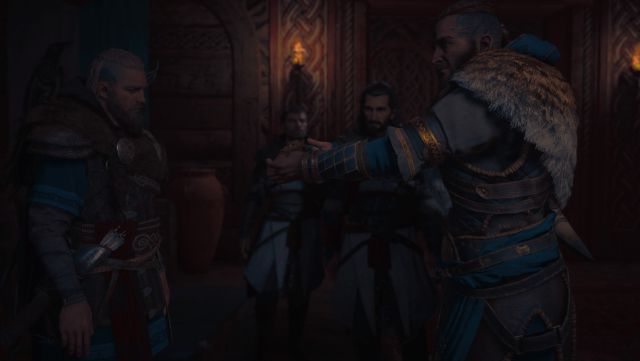
The pagans come to England
Eivor, the protagonist of the video game, is completely unaware of the conflict between the two orders, including his own existence. He was born into a Norwegian family, a frigid land of snowy beauty. Its people, hard as ice, constantly fight against enemy clans. In those early stages of the adventure, the warrior is still a boy (or a girl, since you choose the sex and you can change it at any time or make the Animus decide for you), although the blood of war is bubbling through his veins. Before his eyes, a terrible tragedy takes place, the sap stains the ground scarlet and the desire for revenge penetrates his body like an ax in the belly. Welcomed by the King of Fornburg, Styrbjörn, his son Sigurd and Eivor are turned into flesh and blood.
Years passed and together, still in their native Norway, they hunt down the ghosts of their past. Meanwhile, the young Viking is beset by visions. Odin visits him in those moments of sleep, whispering riddles, words that he does not fully understand. The seer unravels one of those dreams and predicts a betrayal. Desperate at revelations, he tries to understand if his destiny is forever marked. Can he deviate from the path opened by the gods? As the murderers will say years later, “nothing is true, everything is allowed.”
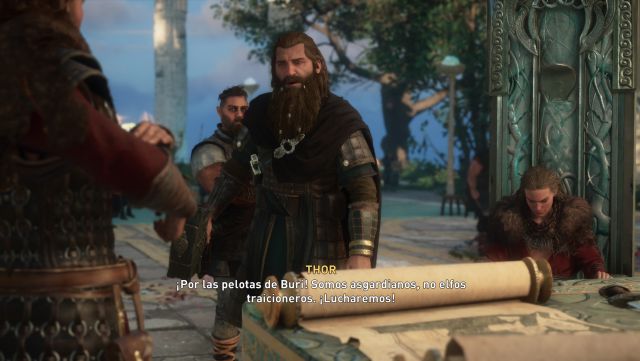
Events quickly rush, the king’s power declines, and Sigurd decides to explore new frontiers. As the leader of the Raven Clan, Eivor will follow him to England, a territory in which the pagans want to settle permanently. We are in a period of division between the various Christian kingdoms. The nobles, thirsty for power, execute their movements within a game of thrones in which the pieces move incessantly, whoever falls. The pawns are spread out on the world map, much smaller than the previous installments, but don’t be fooled: the game is as extensive as the previous ones.
The history of Assassin’s Creed Valhalla introduces us to Viking fantasy, its culture, often smudged with fiction, interspersed with the mythology and beliefs of the Norse peoples (and colored with some clichés, of course). Still, Eivor does not embody the kind of character who solves all problems with violence. Not surprisingly, the project’s own narrative director, Darby Mc Devitt, has stressed on numerous occasions the importance of diplomacy, also embodied in the game. For this reason, although it may seem strange at first glance, the stealth mechanics fit perfectly with the plot approach: “Social secrecy was designed taking into account how you evolve within the country, in a context in which people are hostile towards your person. The hood and the masses become a tool, so that you are not easily recognizable “, clarified the producer Julien Laferriere in an interview with FreeGameTips.
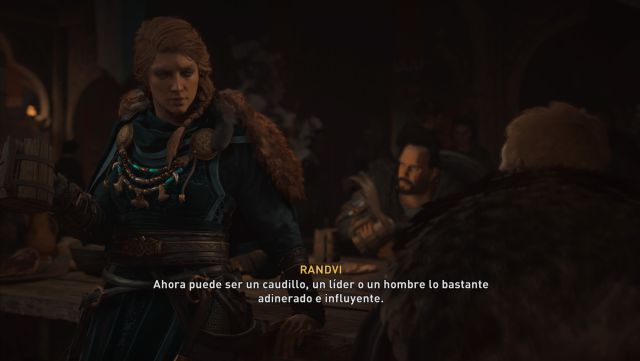
The war conflict continues to be a central element in the story and the gameplay of the title. Still, Eivor must weave a network of allies across England to survive and prosper in these new lands. The result is a quite interesting story, in which we will not stop seeing historical or legendary figures such as the sons of Ragnar Lothbrok (Ivarr the Boneless and Ubba) or King Alfred of Wessex. It is surprising that some dialogues are written in verse, with an attention to detail that surpasses that of other installments in the series. In addition, the effort to recover the lore of the Assassins and Templars is perceived, despite the fact that the plot focuses more on the past than on the present.
The plot is built through a narrative structure that separates the whole story into different arcs, called Sagas. In this way, the player gradually discovers the different territories and characters that make up the world. All that historical fabric comes to life thanks to the music of Sarah Schachner, composer of Assassin’s Creed Origins, who together with Jesper Kyd (Assassin’s Creed II) and Einar Selvik (Vikings series) creates a rich musical universe that takes us back to the time of the vikings.
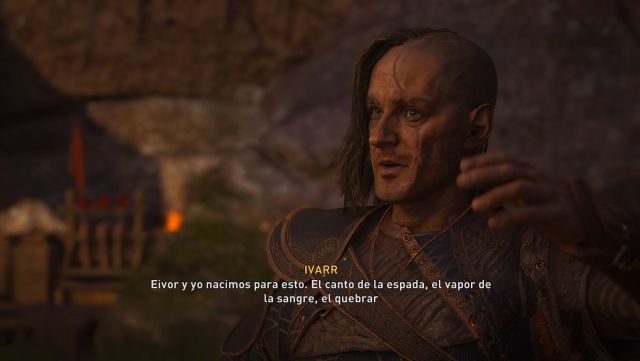
Evolution of the formula?
Ubisoft Montreal has taken the same RPG base of its two predecessors and molded it to nuance some specific aspects. It is a conservative leap, with some new features and improvements, but far from the change that Odyssey made with respect to Origins. Now, that doesn’t mean that certain important mechanics haven’t been touched. As we said, the integration of social secrecy and the hidden leaf is very well resolved. As in the classics, we can wear the hood, blend in with the crowd, go unnoticed on benches, slide through the undergrowth, attract the attention of a drunk to create some ruckus, or chase a target unseen. Hidden Blade Kills are executed as before, as is Synchronization with Watchtowers. It is curious that some of these abilities are not available from the beginning, and that it is the masters of the creed who instruct us. So early in the game we were surprised by death when we tried to take a leap of faith. Later we understood why.
The combat system is a modified version of the previous two, so the main mechanics are once again present in Valhalla: strong and weak attacks with the triggers, parry, possibility to fix the target, movement to dodge and special abilities. These powers are assigned to the slots (four for ranged attacks and another four for melee). The adrenaline bar allows you to execute the skills, while the dash depends on the resistance. The peculiarity is that the character can choose very different combinations of weapons, which includes the possibility of fighting with two shields, weapon and shield or two-handed weapon. The health system has been rethought, it no longer regenerates automatically. In case of need, the rations that we carry in the bag, the plants, the mushrooms or the hot food help Eivor to recover life.

The developers have perfectly captured the essence of the Vikings, giving a violent character to all their blows: severed heads, axes stuck in the forehead, swords in the gut and bloody executions. A novelty is that we can now shoot arrows at different weak points, marked with a yellow aura. For example, if we strike an arrow through the leg, the wretch will fall to his knees, so we can finish him off quickly. The number of different enemy archetypes has been increased, which vary depending on various variables (there are those who fight with light weapons, others with heavy weapons, maces, large shields, crossbows, spears, etc). Knowing the opponent is essential to know what technique to use in each case. There is also no lack of final bosses, generally located at the end of each of the story arcs. These special engagements play out much the same as those in Odyssey, with enemies imbued with more life than normal and having more unique characteristics and abilities.
Make sure that the combat system is a lot of fun, but once again, it doesn’t work quite well in massive battles. When multiple enemies attack at once, it’s easy to lose perspective or be blinded by a bad camera angle. This causes skirmishes to get a bit chaotic at times. Also, a recurring problem that has dragged the saga from the beginning is artificial intelligence. Once again, this skin continues to limp, featuring allies and enemies who don’t always act the way they should. This occurs not only during combat, but also in stealth parts. Now that we are at the gates of a new generation, artificial intelligence should be one of the priorities for Ubisoft. This is where there is real room for improvement.
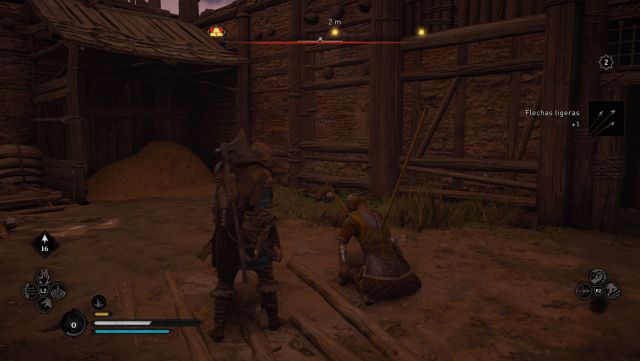
What is remarkable is the progression system, which implements changes to take into account. The character continues to gain experience, but instead of leveling up as such, they earn points that they must then redeem in a vast skill tree. As a board, the player selects the powers divided into three different branches, represented in blue, red and yellow. They provide us with non-assignable abilities, but also deepen their role-playing layer, since we improve attributes such as the damage of light, strong, critical attacks or the capabilities for stealth or murder, among other aspects. On the other hand, the abilities that we can assign and use during combat are obtained through Books of Power scattered around the world.
One of the problems with Assassin’s Creed Odyssey is that the level of the enemies could produce progression barriers that prevented continuing with the main story. The Montreal studio has partially solved this, but in the final part you may run into difficulties if you haven’t explored too much of the world and focused almost exclusively on the plot quests.

The settlement, nerve center
We could say that the settlement is the conceptual essence of the video game. The Vikings land in England to find their new home, a place they will have to build with the sweat of their brow. As the settlement progresses, the reputation and services available will increase. A good bakery will improve the banquets, while the tattoo workshop will allow us to personalize the appearance of Eivor: we can choose hairstyles, hair color or tattoos so that our desired character is reflected on the screen. Other buildings, such as that of the seer, will provide us with access to visions, a way to enter a mythological universe where the gods walk like mortals. The house of the Order of the Hidden, for its part, will immerse us in the whole plot against the Ancients.
Crucial conversations take place in the settlement that can change the future of the relationships between the characters. As it grows, new faces are seen, while the main characters offer us the possibility of accompanying them on new missions. The dialogue system returns to bet on different conversational lines, so that the decisions may modify certain aspects of the story. In our case, for example, a character who survived during the demo (thanks to charisma, which improved our persuasion skills) did not survive in the final game.
In the settlement there is also the operations center, where all the political and military movements that will be carried out next are decided. And how is the settlement improved? Without materials there is no possibility of doing it, so the warriors will leave in their drakkar (the ship) and assault the monasteries that cross their path. Mercilessly, brutally, murdering all enemy soldiers and stealing their most coveted treasures

World, events, Order of the Ancients and more
When we tested the game for a few hours for prints, the world seemed darker, especially when compared to Odyssey, with its crystal clear waters and vivid colors. However, both Norway and England have their own charm and contrasts. Graphically, this is a product that looks pretty good. Still, probably because it needs some more patch, we have found minor problems and lip desynchronization in the voices (in the original version in English, it is also translated and dubbed into Spanish).
The exploration is practically identical to that of the Ubisoft Québec title, that is, we are not always offered a clear destination, so the player must consult the map and the clues to find the correct place. On the other hand, this time we do not have the presence of an eagle, but that of the crow Synin. Its function does not change, although its powers are not developed from the beginning, so its use is not as recurrent. At this point, it is worth mentioning the return of parkour, a mechanic exploited from Assassin’s Creed III that speeds up exploration and the speed with which we move.
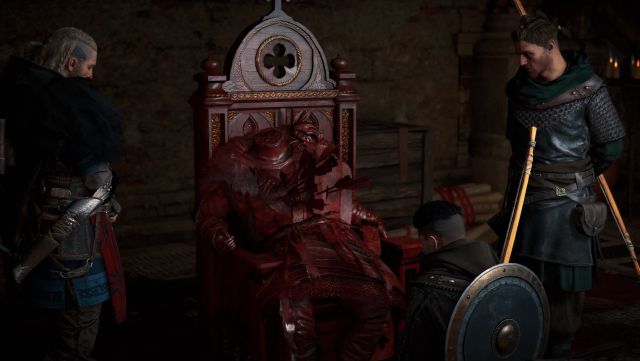
Another element that is rescued from Assassin’s Creed Odyssey is the mechanic of searching and eliminating members of the Order of the Ancients. Again, it is necessary to unravel the clues to unmask each of them. The novelty is that around these figures are formed a group of elite enemies, formidable final bosses who roam the world and who will make things difficult for us. This idea comes from the mercenaries in the previous chapter, but there is no longer a Nemesis-type system.
The fact that the Norse are invaders in the British kingdoms does not create a structure of secondary missions like in the previous games. Instead, we have world events, which are still something similar. They are a set of stories, always of short duration, that tell little jokes, generally funny, although without importance for Eivor or for the plot. Perhaps we expected something more elaborate that would add a little more to the whole.
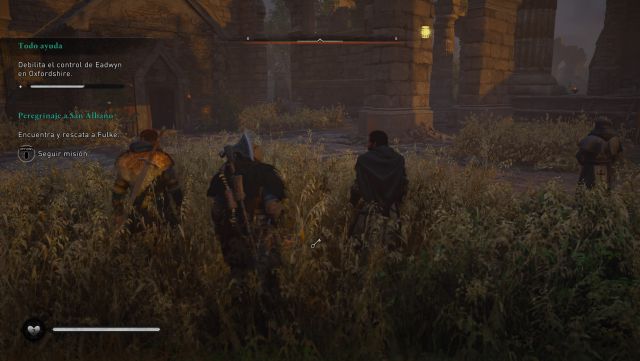
Beyond conversations and fighting, and as is usual in Ubisoft titles, all kinds of secondary tasks and collectibles are added. From searching for objects in Roman ruins to participating in entertaining mini-games. Drinking contests? Skol! Bow tournaments? Shoot the target! A game of dice? Think hard about your next move! As if that weren’t enough, Viking mocking battles are dialectical fights in which each contestant chants a verse full of insults against the opponent. The trick is to respect the rhymes and measure the tempos well. Succeeding will give us more charisma, essential to be able to unlock some dialogue options. Eivor is a warrior with a sword and a sharp tongue. And from poetry to bed, because romances are back (traces of Odyssey). The use of metaphor can sometimes be somewhat suggestive, as shown by one of the allies who invites us to test his “sword of love”, literal words.
The Animus does not always work as it should, so there are anomalies that the player must resolve by embodying Layla Hassan, one of the characters of the present. Ubisoft has created minigames that mix platforms with light puzzles. The idea is to illuminate the platforms so that they stop being incorporeal and allow us to advance to the end.
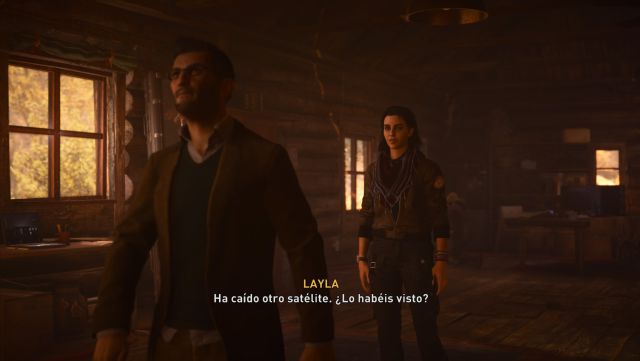
They say that the Dark Ages was a time without lights. When the Roman Empire collapsed, its territories decomposed and knowledge was lost forever. Society lived in ignorance, blind in darkness. Or so it was believed. The reality was quite different. To paraphrase the historian Rodney Stark: “It was one of the ages of humanity that stood out for its strong innovative character, in which technology was developed and put at the service of man to an extent that no civilization had known before.” If something becomes clear to us after playing Assassin’s Creed Valhalla, it is that they have not portrayed the Vikings as vulgar ignorant, but as depositaries of an ancient culture that did not disdain knowledge or poetry.
CONCLUSION
Assassin’s Creed Valhalla performs at a level as high as Assassin’s Creed Odyssey, but the proposal is excessively continuous in general terms. Its great quality, and they are not few, is that Ubisoft has managed to integrate the lore and mechanics of yesteryear, which they have mixed with the new RPG formula released in Origins. The return of parkour, assassinations with the hidden blade and social stealth are complemented by a combat system with more options, which allows you to use different types of weapons and even fight with two shields. The brutal executions, the different archetypes of enemies and the possibility of using special abilities offer an amalgam of options to consider. Unfortunately, mass battles can be chaotic, as well as artificial intelligence, which remains a pending issue. The role-playing component is enhanced thanks to the new progression system, which opens the doors to a skill board that gradually adds powers, but also improves the different attributes. The settlement, the heart of the new Nordic kingdom in England, gives rise to the construction of renovated buildings. These give access to different services, which in turn increase some characteristics of the character. Ubisoft Montreal’s new production is once again a vast title, with a long main story and multiple sub-tasks to pay attention to. Conservative in essence, and still highly recommended. One of the best of the saga.
THE BEST
- Great integration of classic elements: social stealth, the hidden blade and parkour
- More presence of the lore of the saga
- Revamped progression system
- The settlement, simple but effective
- The impressive soundtrack
- Brutal and visceral combat …
WORST
- … although somewhat chaotic in mass battles
- Too continuous with respect to Odyssey
- Fun world missions, but little else
- Artificial intelligence
Very good
A game with a remarkable finish that we will enjoy and remember. A good buy, highly recommended for lovers of the genre. It is well cared for at all levels.
